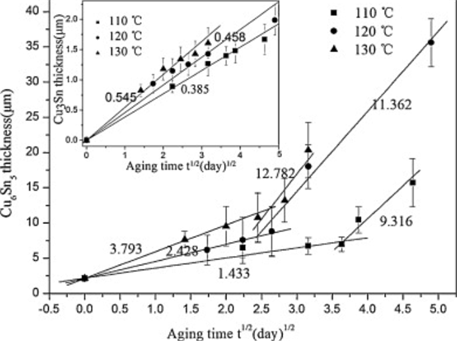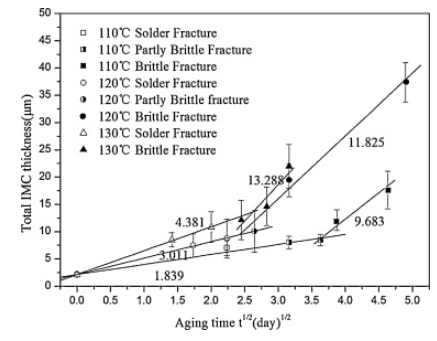The Mechanism of Intermetallic Compounds of Tin-Bismuth Solder Paste
The Mechanism of Intermetallic Compounds of Tin-Bismuth Solder Paste
1.Introduction of Tin-bismuth solder paste
With the popularization of lead-free solder pastes, tin-bismuth solder paste has received attention from the packaging industry. Tin-bismuth solder paste is famous for its excellent mechanical properties and low melting point. One of the parameters to judge a good solder interface is the formation of intermetallic compounds (IMC). Proper IMC growth can provide better strength for solder joints. When the tin-bismuth solder alloy is soldered to the copper substrate, an interfacial reaction occurs to generate Cu6Sn5 and Cu3Sn. During long-term thermal aging, the IMC thickness gradually increases, and the overgrown IMC can affect the strength of the solder joint and lead to failure.
2. IMC growth mechanism at the soldering interface
During the reflow process, the tin-bismuth solder paste diffuses with the copper substrate. Sn atoms in the molten solder diffuse to the interface. Cu dissolves into the liquid solder and supersaturates the Cu-Sn interface, and then the Cu-Sn chemically reacts. Cu6Sn5 is rapidly generated and nucleated at the interface. Only Cu6Sn5 is produced during soldering, which has the thickness about 2μm. However, Cu6Sn5 and Cu3Sn are generated after thermal aging (Kang, 2011). It can be seen from Figure 1 that the IMC thickness is positively correlated with the aging temperature and time. The growth rate of Cu3Sn is slightly slower and linear with aging time. In addition, after a period of aging, the solder joints developed problems of brittleness and failure (Figure 2).

Figure 1: The relationship between the IMC thickness and aging time.

Figure 2: The relationship between the IMC thickness and aging time, including solder joint brittleness change.
When Cu6Sn5 is transformed into Cu3Sn during thermal aging, Bi will precipitate due to its lower solubility in Cu3Sn. The precipitated Bi migrates to the Cu3Sn/Cu interface through the Kirkendall effect and forms Bi segregation, making the solder joints completely brittle (Kang, 2011).
3. Reference
Kang, T.Y., Xiu, Y.Y., Liu, C.Z., Hui, L., Wang, J.J., & Tong, W.P. (2011), "Bismuth segregation enhances intermetallic compound growth in SnBi/Cu microelectronic interconnect. Journal of Alloys and Compounds", 509(5), pp.1785-1789

















 Back to list
Back to list



